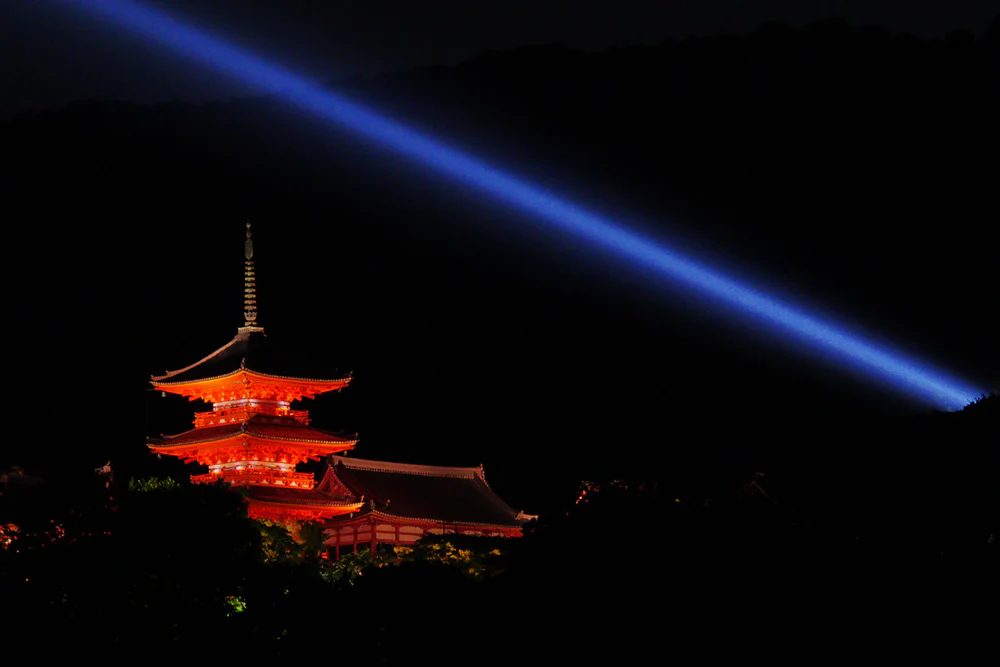
Einführung japanischer Kerze
Japanische Kerzen, auch als "Wachskerzen" bekannt, waren ein Leuchtfeuer der Tradition und Kultur in der gesamten Geschichte Japans und beleuchten nicht nur physische Räume, sondern auch die spirituellen und kulturellen Wege der Nation. Diese Kerzen sind aus überwiegend natürlichen Materialien hergestellt und sind aufgrund ihrer einzigartigen Ästhetik und der komplizierten Handwerkskunst hervorgegangen, die erforderlich ist, um sie zu schaffen. Ursprünglich für buddhistische Tempel und unter der Aristokratie reserviert, hat ihr warmes, sanft flackierendes Licht seit langem eine entscheidende Rolle in spirituellen Ritualen und dem Alltag gespielt. Sie sind zutiefst symbolisch und repräsentieren oft Reinheit, die flüchtige Natur der Existenz und den Schutz gegen böswillige Kräfte.
Die Schaffung dieser Kerzen ist eine Kunstform, die in der historischen Tradition zutiefst verwurzelt ist und über Generationen von erfahrenen Handwerkern verfeinert wurde. Das verwendete primäre Material ist Dunstwachs, das aus den Früchten des Dunstbaums extrahiert wird und den Kerzen einen natürlichen und subtilen Duft liefert. Dieses Wachs wird durch einen dicken, handgeschnittenen Docht aus Washi-Papier ergänzt, der eine größere und hellere Flamme als typische Kerzen ermöglicht. Diese einzigartige Kombination verbessert nicht nur die Lichtleistung, sondern stellt auch sicher, dass die Flamme lebhafter tanzt und dynamische Schatten gießt, die das Ambiente einer Einstellung beitragen. Fachkundige Handwerker infusen auch die Kerzen mit einer Vielzahl von natürlichen Düften und schmücken sie mit zarten, oft handbemalten Designs, wodurch jede Kerze in ein eigenständiges Kunstwerk verwandelt wird.
Geografisches Merkmal
- Stadt und Präfektur : Kyoto, Präfektur Kyoto
- Bevölkerung : Ungefähr 1,46 Millionen Menschen
- Spezielle Produkte : Beyond Kiyomizu Ware ist Kyoto für seine exquisite Matcha (grünem Tee pulverisiert), die duftende Yuzu -Zitrusfrüchte und eine Reihe traditioneller Handwerks wie Uji -Tee, Kyoto -Seide und Bambushandwerk bekannt.
- Einführung : Kyoto mit seiner berühmten Vergangenheit als japanische alte Hauptstadt ist eine Stadt, in der Geschichte und Moderne in Harmonie zusammenkommen. Kyoto ist berühmt für seine atemberaubenden Tempel, traditionellen Teehäuser und kulturellen Festivals und dient als lebendiges Museum der reichen Geschichte Japans.

Geschichte der japanischen Kerze
Ursprünge im kaiserlichen Glühen
Die Kerzenherstellung in Kyoto hat ihre Ursprünge tief in den spirituellen Praktiken der Stadt verwurzelt und beginnt während der Heian -Zeit als Tempelhandwerk. Historische Aufzeichnungen zeigen, dass Mönche Kerzen zuerst als praktisches Instrument zur Messung der Zeit während ihrer komplizierten Gebete und umfangreichen Rituale hergestellt haben. Diese Methode ermöglichte es ihnen, präzise Intervalle für das Sangen und Meditieren aufrechtzuerhalten und die Kunst der Kerze zu integrieren, die tief in das spirituelle und kulturelle Stoff von Kyoto hergestellt wird.

Das Wachs und die Dochtentwicklung
Handwerker entwickelten spezielle Methoden, um das Dunstwachs gründlicher zu verfeinern, was zu einem saubereren und konsequenter Verbrennen führte. Darüber hinaus wurde die Vorbereitung von Dochten verbessert, die es den Kerzen ermöglichten, heller und länger als je zuvor zu verbrennen. Diese Dochte wurden sorgfältig aus hochwertigem Washi-Papier hergestellt, behandelt und verdreht auf eine Weise, die den Sauerstofffluss zur Flamme erhöhte und so ein stetigeres und leuchtenderes Licht erzeugte. Diese technische Meisterschaft unterscheidet Kyoto -Kerzen von anderen regionalen Varianten, was sie in ganz Japan sehr gefragt hat.

Erhaltung der Reinheit
Das Engagement der Handwerker für die Erhaltung dieser Methoden war durch einen tiefen Respekt für die kulturelle Bedeutung und den künstlerischen Wert ihres Handwerks getrieben. Kyoto -Kerzen, die für ihre helle und saubere Flamme bekannt sind, waren weiterhin in verschiedenen traditionellen Umgebungen wie Teezeremonien, religiösen Ritualen und Familienaltären. Diese Kontinuität stellte sicher, dass die Kerzen ihre Rolle nicht nur als Lichtquellen beibehielten, sondern als kulturelle Symbole, die die ästhetischen und spirituellen Werte von Kyoto verkörpern.

Merkmale japanischer Kerze
1. Illuminating Design
Japanische Kerzen sind für ihre exquisiten, oft handbemalten Designs bekannt. Diese Kunstwerke zum Wachs variieren von einfachen natürlichen Motiven bis hin zu komplizierten Landschaften, die die Jahreszeiten und die natürliche Schönheit Japans widerspiegeln, wobei jede Kerze einen Einblick in die Vision und Fähigkeit des Handwerkers bietet.

2. Eine Symphonie von Düften
Handwerker infusen diese Kerzen oft mit subtilen Düften aus lokalen Blumen und Kräutern wie Yuzu und Sakura. Dies verbessert nicht nur das Ambiente, sondern spiegelt auch die saisonale Schönheit von Kyoto wider und ermöglicht es jeder Kerze, eine Geschichte durch ihren Duft zu erzählen.

Moderne Anwendungen
Heute werden Kyoto -Kerzen sowohl innerhalb als auch außerhalb Japans verehrt, nicht nur für ihre praktische Verwendung in Zeremonien und täglichem Leben, sondern auch als Kunstobjekte. Sie werden in zeitgenössischen Umgebungen wie Spas und Boutique -Hotels immer beliebter, in denen ihr natürliches Licht und ihr Duft zu einer friedlichen und authentischen Atmosphäre beitragen.

